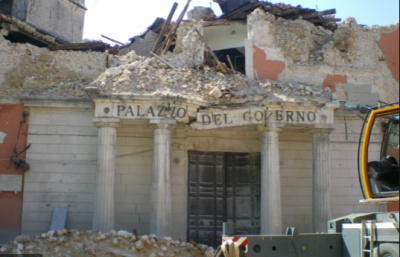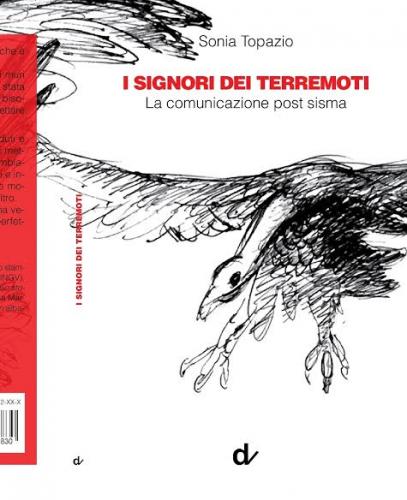Books: Political after shocks of Italy’s endless earthquakes

Starting from the 1785 earthquake in Calabria all the way to the last fatal tremors that killed scores of Romans holidaying in the central hill town of Amatrice in 2016, Sonia Topazio’s book ‘The lords of earthquakes’ gives an overview of the seismic question in Italy focussing on how the establishment has repeatedly failed to protect innocent citizens. Rather than shying away from the complexity of the topic, the author explores it using a polyphonic choir interweaving the voices of earthquake survivors with researchers, journalists and politicians. Why do earthquakes in Italy cause so many deaths and injuries, despite having a relatively low magnitude?
Sara, the book’s main character, as a young girl experiences the Irpinia earthquake in 1980 (which killed 2483 people, injured 7,700 and left 250,000 homeless. She becomes the reader’s guide as the author proceeds with her questioning and review of seismic events.
Earthquake-sensitive areas in Italy have been mapped since the end of the 18th century and risk is now mapped very accurately. And yet earthquakes such as the one which hit l’Aquila in 2009 still traumatize the country.
Part of the answer, suggests the author, is to be found in the sensitive relationship between ‘experts’ from the national seismological institute (ING) and others, and the press. Both lack awareness of their words’ weight. Experts often fail to understand the extent of their influence on people’s behaviour.
Journalists may find it difficult to resist the temptation of sensationalism, instead of focusing on providing context and researching actual causes of earthquakes’ impacts. Tragic events such as the massive quake in the Abruzzi region in 2009 can irremediably damage the trust relationship between the general public and those experts who are supposed to guide them.
Journalists’ role and responsibility is to mediate between the two, trying to make up for their respective shortcomings. Researchers tend to underestimate the power of their words. And people look for easy solutions, such as magical machines which predict earthquakes.
However, as article after article, and report after report are explored, as the reader is exposed to the character’s own thoughts and questions, the role played by political choices emerges. Earthquakes cannot be predicted, but damage can be prevented or contained.
A report written by the vulcanologist Prof. Franci Barberi in 1999 highlighted that there were then as many as 75,000 public interest buildings in Italy identified as being at strong risk of collapse in case of earthquake.
They included hospitals, town halls, and schools, such as the San Giuliano School which collapsed during a small intensity earthquake in Molise in 2002, killing 28 schoolchildren and their teacher in the class because the school was built with sub-standard materials by an unscrupulous contractor.
The history of earthquake legislation in Italy is traced by Ms Topazio starting with the first seismic map drafted in Europe, following Messina’s 1908 huge earthquake which killed half of Sicily’s inhabitants, all the way to then Prime Minister Matteo Renzi’s Piano Casa, which was supposed to finance efforts to secure key vulnerable buildings. It then simply turned into yet another example of lack of public good management, as close to nothing was achieved by the plan. Who are the Lords of the earthquakes Ms Topazio refers to, really?
By creating a collage of articles, reports, storytelling and notes, Ms Topazio builds a lively fresco of Italy’s institutional landscape. She weaves in documents and press articles with quotes from l’Aquila earthquake survivors.
Their voices awaken our own questions, push us to think about the trauma experienced by the populations who live in Earthquake-prone areas across Italy, from Molise to Sicily. A deeply traumatic experience which takes houses, loved ones and memories away from people.
Ms Topazio’s pithy, thought-provoking book will be required reading for those seeking to gain a deeper understanding of one of the darkest interfaces between Italy and its geography.
I signori dei terremoti - la comunicazione post-sisma. Sonia Topazio, Doppiavoce. 75 pages, 10 euros
jp-jmj




